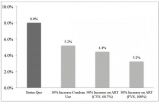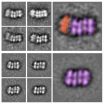(Press-News.org) During the 1930s, North America endured the Dust Bowl, a prolonged era of dryness that withered crops and dramatically altered where the population settled. Land-based precipitation records from the years leading up to the Dust Bowl are consistent with the telltale drying-out period associated with a persistent dry weather pattern, but they can't explain why the drought was so pronounced and long-lasting.
The mystery lies in the fact that land-based precipitation tells only part of the climate story. Building accurate computer reconstructions of historical global precipitation is tricky business. The statistical models are very complicated, the historical data is often full of holes, and researchers invariably have to make educated guesses at correcting for sampling errors.
Hard science
The high degree of difficulty and expertise required means that relatively few climate scientists have been able to base their research on accurate models of historical precipitation. Now, a new software program developed by a research team including San Diego State University Distinguished Professor of Mathematics and Statistics Samuel Shen will democratize this ability, allowing far more researchers access to these models.
"In the past, only a couple dozen scientists could do these reconstructions," Shen said. "Now, anybody can play with this user-friendly software, use it to inform their research, and develop new models and hypotheses. This new tool brings historical precipitation reconstruction from a 'rocket science' to a 'toy science.'"
The National Science Foundation–funded project is a collaboration between Shen, University of Maryland atmospheric scientist Phillip A. Arkin and National Oceanic and Atmospheric Administration climatologist Thomas M. Smith.
Predicting past patterns
Prescribed oceanic patterns are useful for predicting large weather anomalies. Prolonged dry or wet spells over certain regions can reliably tell you whether, for instance, North America will undergo an oceanic weather pattern such as the El Nino or La Nina patterns. The problem for historical models is that reliable data exists from only a small percentage of the earth's surface. About eighty-four percent of all rain falls in the middle of the ocean with no one to record it. Satellite weather tracking is only a few decades old, so for historical models, researchers must fill in the gaps based on the data that does exist.
Shen, who co-directs SDSU's Center for Climate and Sustainability Studies Area of Excellence, is an expert in minimizing error size inside model simulations. In the case of climate science, that means making the historical fill-in-the-gap guesses as accurate as possible. Shen and his SDSU graduate students Nancy Tafolla and Barbara Sperberg produced a user-friendly, technologically advanced piece of software that does the statistical heavy lifting for researchers. The program, known as SOGP 1.0, is based on research published last month in the Journal of Atmospheric Sciences. The group released SOGP 1.0 to the public last week, available by request.
SOGP 1.0, which stands for a statistical technique known as spectral optimal gridding of precipitation, is based on the MATLAB programming language, commonly used in science and engineering. It reconstructs precipitation records for the entire globe (excluding the Polar Regions) between the years 1900 and 2011 and allows researchers to zoom in on particular regions and timeframes.
New tool for climate change models
For example, Shen referenced a region in the middle of the Pacific Ocean that sometimes glows bright red on the computer model, indicating extreme dryness, and sometimes dark blue, indicating an unusually wet year. When either of these climate events occur, he said, it's almost certain that North American weather will respond to these patterns, sometimes in a way that lasts several years.
"The tropical Pacific is the engine of climate," Shen explained.
In the Dust Bowl example, the SOGP program shows extreme dryness in the tropical Pacific in the late 1920s and early 1930s — a harbinger of a prolonged dry weather event in North America. Combining this data with land-record data, the model can retroactively demonstrate the Dust Bowl's especially brutal dry spell.
"If you include the ocean's precipitation signal, the drought signal is amplified," Shen said. "We can understand the 1930s Dust Bowl better by knowing the oceanic conditions."
The program isn't a tool meant to look exclusively at the past, though. Shen hopes that its ease of use will encourage climate scientists to incorporate this historical data into their own models, improving our future predictions of climate change.
INFORMATION:
Researchers interested in using SOGP 1.0 can request the software package as well as the digital datasets used by the program by e-mailing sogp.precip@gmail.com with the subject line, "SOGP precipitation product request," followed by your name, affiliation, position, and the purpose for which you intend to use the program.
About San Diego State University
San Diego State University is a major public research institution offering bachelor's degrees in 91 areas, master's degrees in 78 areas and doctorates in 22 areas. The university provides transformative experiences, both inside and outside of the classroom, for its 35,000 students. Students participate in research, international experiences, sustainability and entrepreneurship initiatives, and a broad range of student life and leadership opportunities. The university's rich campus life features opportunities for students to participate in, and engage with, the creative and performing arts, a Division I athletics program and the vibrant cultural life of the San Diego region. For more information, visit http://www.sdsu.edu.
Our mood can affect how we walk — slump-shouldered if we're sad, bouncing along if we're happy. Now researchers have shown it works the other way too — making people imitate a happy or sad way of walking actually affects their mood.
Subjects who were prompted to walk in a more depressed style, with less arm movement and their shoulders rolled forward, experienced worse moods than those who were induced to walk in a happier style, according to the study published in the Journal of Behavior Therapy and Experimental Psychiatry.
CIFAR Senior Fellow Nikolaus ...
Rochester, Minn. – The American Academy of Neurology (AAN) and the American Association of Neuromuscular & Electrodiagnostic Medicine (AANEM) offer a new guideline on how to determine what genetic tests may best diagnose a person's subtype of limb-girdle or distal muscular dystrophy. The guideline is published in the October 14, 2014, print issue of Neurology®, the medical journal of the AAN.
Researchers reviewed all of the available studies on the muscular dystrophy, a group of genetic diseases in which muscle fibers are unusually susceptible to damage, as ...
COLUMBIA, Mo. – According to the Centers for Disease Control and Prevention (CDC), many teens skip breakfast, which increases their likelihood of overeating and eventual weight gain. Statistics show that the number of adolescents struggling with obesity, which elevates the risk for chronic health problems, has quadrupled in the past three decades. Now, MU researchers have found that eating breakfast, particularly meals rich in protein, increases young adults' levels of a brain chemical associated with feelings of reward, which may reduce food cravings and overeating ...
PROVIDENCE, R.I. [Brown University] — To address the HIV epidemic in Mexico is to address it among men who have sex with men (MSM), because they account for a large percentage of the country's new infections, says Omar Galárraga, assistant professor of health services policy and practice in the Brown University School of Public Health.
A major source of the new infections is Mexico City's male-to-male sex trade, Galárraga has found. In his research, including detailed interviews and testing with hundreds of male sex workers on the city's streets and in ...
Coordinating product placement with advertising in the same television program can reduce audience loss over commercial breaks by 10%, according to a new study in the Articles in Advance section of Marketing Science, a journal of the Institute for Operations Research and the Management Sciences (INFORMS).
Synergy or Interference: The Effect of Product Placement on Commercial Break Audience Decline is by David A. Schweidel, Associate Professor of Marketing at Goizueta Business School, Emory University, Natasha Zhang Foutz, Assistant Professor of Marketing at McIntire School ...
UPTON, NY—The proteins that drive DNA replication—the force behind cellular growth and reproduction—are some of the most complex machines on Earth. The multistep replication process involves hundreds of atomic-scale moving parts that rapidly interact and transform. Mapping that dense molecular machinery is one of the most promising and challenging frontiers in medicine and biology.
Now, scientists have pinpointed crucial steps in the beginning of the replication process, including surprising structural details about the enzyme that "unzips" and splits ...
OAK RIDGE, Tenn., Oct. 15, 2014—Researchers at the Department of Energy's Oak Ridge National Laboratory have demonstrated an additive manufacturing method to control the structure and properties of metal components with precision unmatched by conventional manufacturing processes.
Ryan Dehoff, staff scientist and metal additive manufacturing lead at the Department of Energy's Manufacturing Demonstration Facility at ORNL, presented the research this week in an invited presentation at the Materials Science & Technology 2014 conference in Pittsburgh.
"We can now ...
October 15, 2014 – A recently concluded demonstration project made meaningful progress toward introducing a "patient-centered medical home" approach at "safety net" practices serving vulnerable and underserved populations. Lessons learned in the course of developing and implementing the Safety Net Medical Home Initiative (SNMHI) are featured in a special November supplement to Medical Care. The journal is published by Lippincott Williams & Wilkins, a part of Wolters Kluwer Health.
The supplement presents nine original papers sharing "experience and learning" from ...
AMES, Iowa – The stories are shocking and heartbreaking, but they are often disjointed and hard to follow. In severe cases, the narratives are even more chaotic. This is reality for victims of workplace bullying and a major reason why they stay silent, said Stacy Tye-Williams, an assistant professor of communications studies and English at Iowa State University.
No one expects to go to work and feel as though they are back on the school playground, but bullying is all too common for many workers. Approximately 54 million workers, or 35 percent of U.S. employees, ...
A study published online today in the journal Conservation Physiology has shown that the epaulette shark (Hemiscyllium ocellatum) displays physiological tolerance to elevated carbon dioxide (CO2) in its environment after being exposed to CO2 levels equivalent to those that are predicted for their natural habitats in the near future.
Atmospheric CO2 levels have increased by almost 40% in the last 250 years, and the world's oceans have absorbed more than 30% of the additional CO2. The resulting rise in seawater CO2 and associated reduction in pH – known as ocean ...




